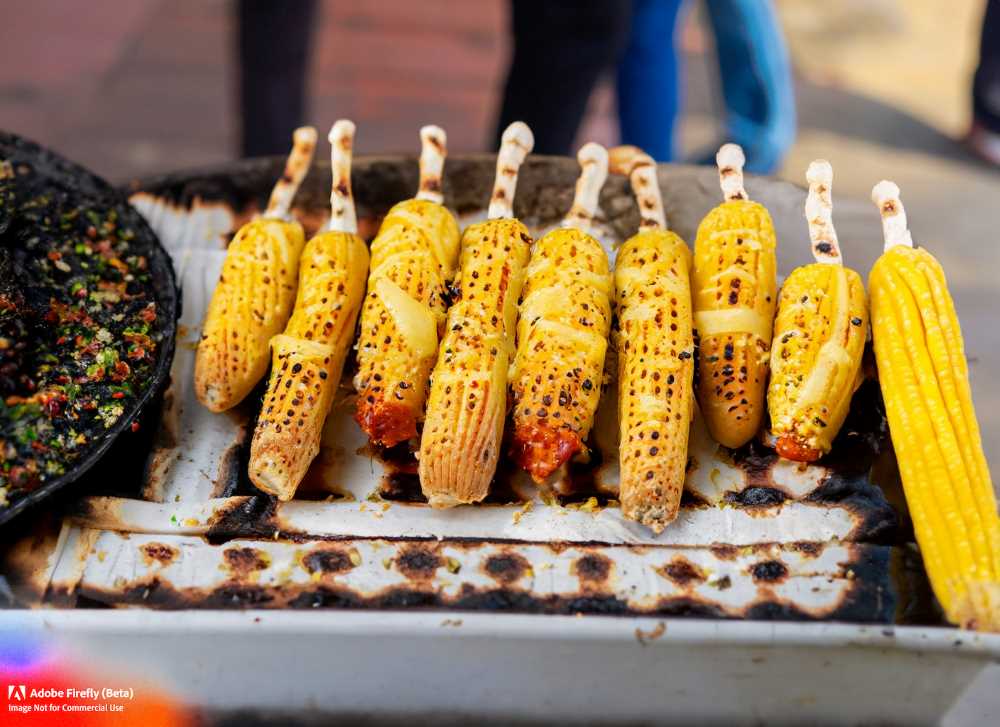How Traditional Mexican Dishes are Making a Comeback in Modern Cuisine
Explore the diverse and complex world of Mexican cuisine and culture beyond just tacos and tequila. From traditional dishes to contemporary fusion cuisine, festivals, and street food, there is something for everyone.

Mexico is a country known for its vibrant culture, rich history, and flavorful cuisine. While most people associate Mexican cuisine with staples like tacos, burritos, and tequila, the country's culinary landscape is far more diverse and complex than most people realize. In this article, we will explore the many facets of Mexican cuisine and culture, from the traditional dishes of different regions to the contemporary food scene in major cities.
Traditional Mexican Cuisine
While tacos and tequila are undoubtedly delicious, Mexican cuisine is much more than that. The country boasts a wide range of traditional dishes that vary from region to region. For instance, in the southern state of Oaxaca, mole (pronounced moh-lay) is a staple dish. This rich and flavorful sauce is made with over 30 different ingredients, including chiles, spices, and chocolate. It is typically served over chicken or turkey and accompanied by rice and beans.
In the northern state of Chihuahua, the cuisine is heavily influenced by the cowboy culture that permeates the region. Dishes like carne asada (grilled beef), cabrito (roasted goat), and menudo (spicy tripe soup) are popular in this area. In the Yucatan peninsula, Mayan influence can be seen in dishes like cochinita pibil (slow-roasted pork) and panuchos (fried tortillas stuffed with black beans and topped with shredded chicken, pickled onions, and avocado).
Contemporary Mexican Cuisine
While traditional Mexican cuisine is still prevalent, contemporary Mexican cuisine has been gaining popularity in recent years. Young chefs in cities like Mexico City and Guadalajara are putting their spin on classic dishes by incorporating international ingredients and techniques. This fusion of flavors and cultures has resulted in some truly unique and exciting dishes.
One example of this fusion is found in the popular dish known as chilaquiles. Traditionally, chilaquiles are made by simmering tortilla chips in a sauce made with tomatoes, chiles, and spices. The dish is then topped with cheese, sour cream, and onions. In contemporary Mexican cuisine, chilaquiles are often served with eggs, avocado, and other non-traditional toppings.
Another example of fusion cuisine is found in the work of Chef Enrique Olvera, the mastermind behind Pujol, one of Mexico City's most famous restaurants. Olvera's dishes blend traditional Mexican ingredients with modern culinary techniques, resulting in a unique and unforgettable dining experience. One of his signature dishes is the "Mole Madre," a mole that has been aged for over 1,000 days and served with tortillas made from heirloom corn.
Mexican Street Food
No exploration of Mexican cuisine would be complete without a mention of the street food scene. Mexican street food is known for its delicious flavors, affordable prices, and cultural significance. Some of the most popular street foods include elotes (grilled corn on the cob topped with cheese and spices), tamales (steamed corn dough filled with meat or vegetables), and al pastor (spit-roasted pork served on a tortilla with pineapple).
In addition to the food itself, the street food scene is also an important part of Mexican culture. Street vendors are a common sight in cities and towns throughout the country, and they play an important role in the local economy. Eating street food is also a social activity, as friends and families gather to enjoy food and conversation in a casual setting.

Celebrating Mexican Cuisine
Finally, it is worth noting that Mexican cuisine and culture are celebrated throughout the year with a variety of festivals and holidays. One of the most well-known is Dia de los Muertos, or Day of the Dead, which takes place on November 1st and 2nd. This holiday is a time to honor and remember loved ones who have passed away, and it is celebrated with elaborate altars, parades, and of course, food. Pan de muerto (sweet bread), calaveras de azucar (sugar skulls), and tamales are all traditional foods that are enjoyed during this holiday.
Other festivals throughout the year include the Guelaguetza in Oaxaca, which celebrates the cultural diversity of the region through music, dance, and food. In Mexico City, the annual Feria de las Culturas Amigas (Fair of Friendly Cultures) brings together cultures from around the world to share their cuisine, art, and music.
Conclusion
In conclusion, Mexican cuisine and culture are far more diverse and complex than most people realize. From the traditional dishes of different regions to the innovative fusion cuisine of contemporary chefs, there is a world of flavors to explore. Whether you're enjoying street food with friends or dining at a Michelin-starred restaurant, Mexican cuisine offers something for everyone. And with festivals and holidays throughout the year, there are plenty of opportunities to celebrate and honor this vibrant culture. So the next time you're craving tacos and tequila, remember that there is so much more to discover beyond the basics.




